Final year project
Amplify [Read more]
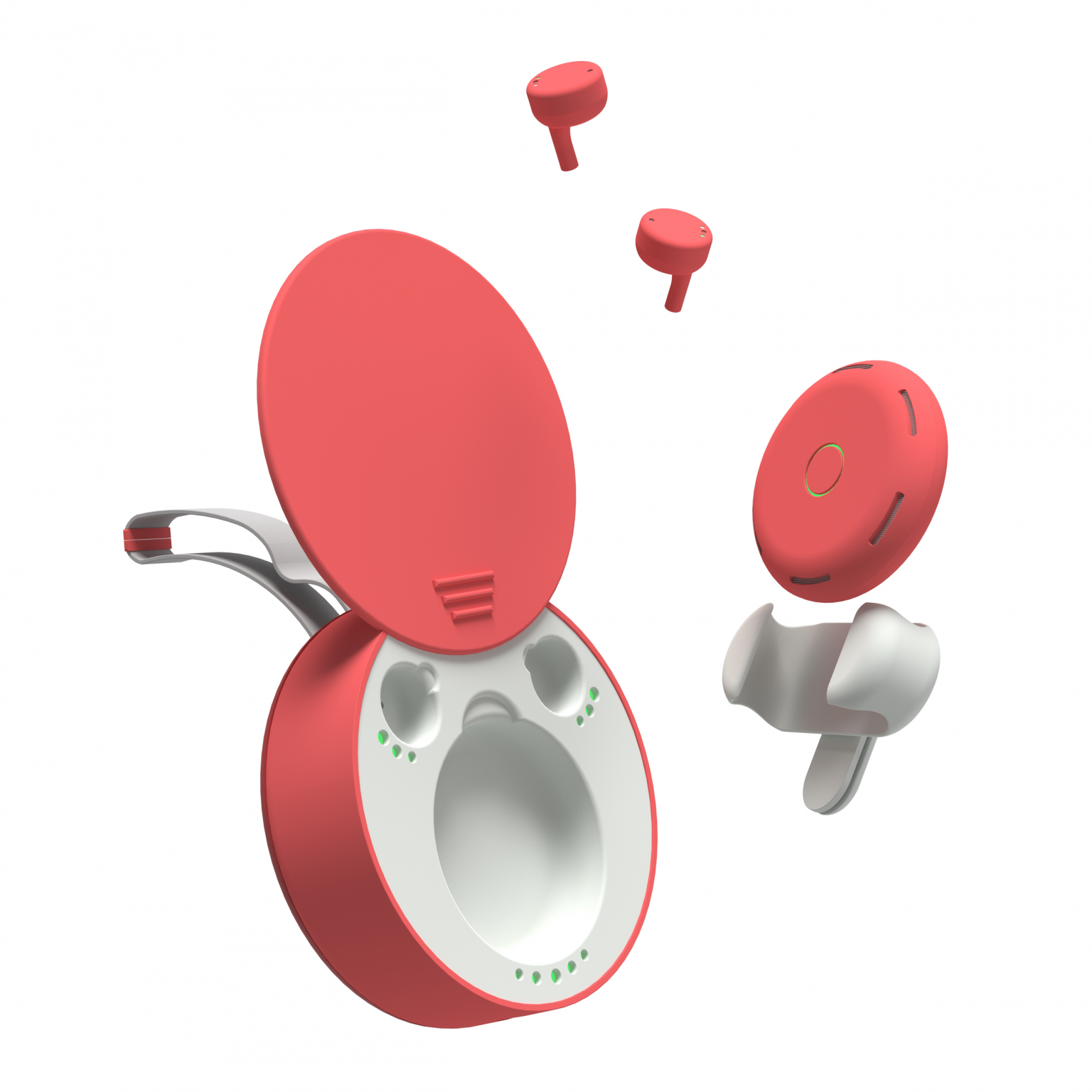
Amplify - A Modular Hearing Product Package that Tackles Both the Stigma of Use and Improving the User’s Hearing in Noisy Indoor Environments.
The aim of this project was to create a product that enables users that have developed mild to moderate hearing loss to feel confident using hearing assistive devices by reducing the stigma through stylistic choices. The product also enables users to hear better in noisy indoor environments through the inclusion of a directional microphone into the product package.
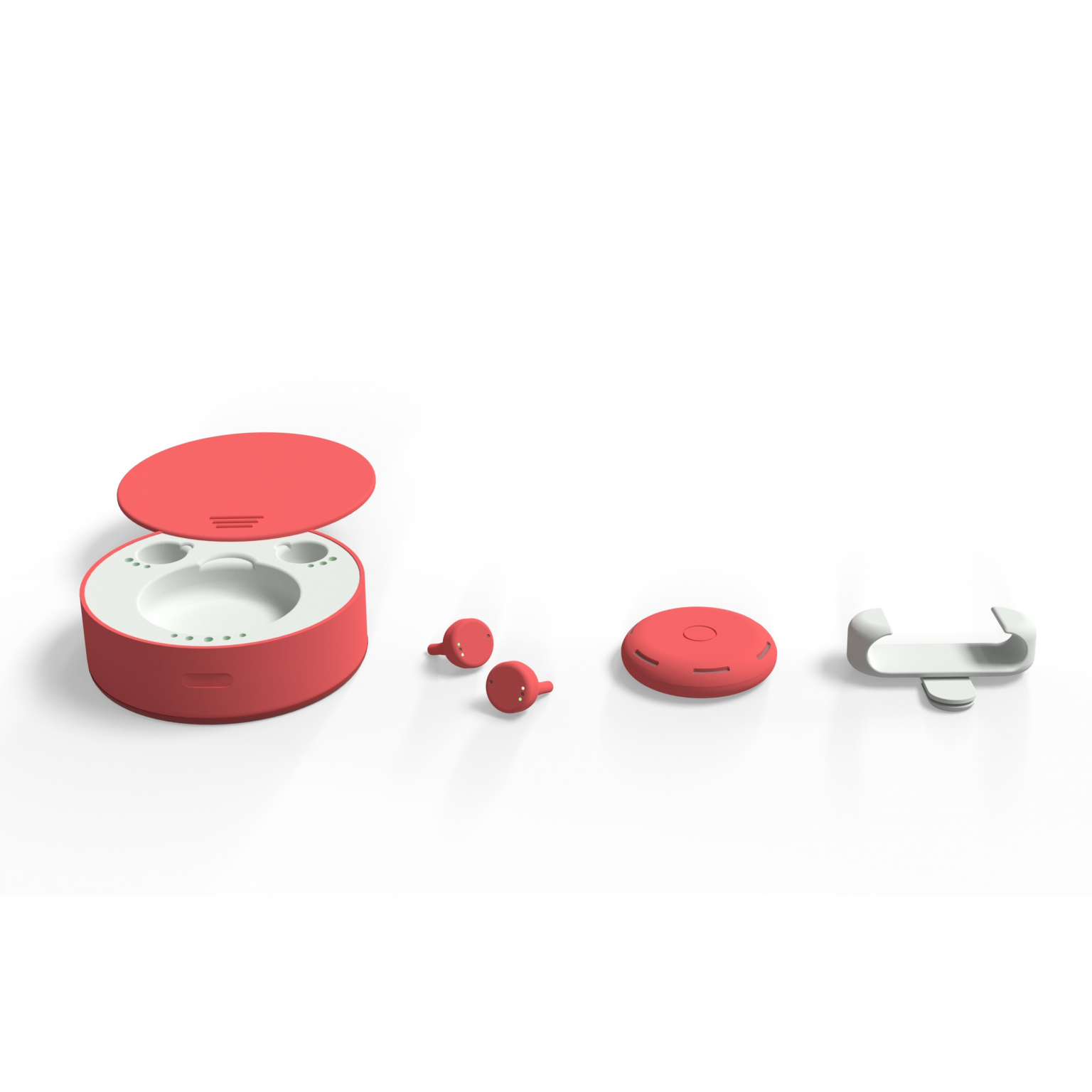

Amplify - Full Product Package
The full product package of Amplify includes a charging case, set of hearings aids, a directional microphone, attachment strap and an additional attachment feature. The reason there are multiple elements within the product package is because similar hearing solutions are all sold separately which increases the stress on users to have to purchase all of the elements separately. By including all of the assistive devices for social interaction within one purchase the user is able to make a one time purchase which provides them with everything they need.


Amplify - Exploded View of Assembly
The Amplify product package is made up of mostly ABS injection moulded parts which have been optimised for commercial manufacture. The base of the charging case has overmolded silicon on top of the ABS shell to give the bottom a soft touch and subtle contrast to the rest of the product. The silicon ear moulds would be outsourced to the NHS who have the capability, through the use of audiologists and labs, to create custom ear moulds for users which they can use with the product. The modular hearing aids included within the product package have been developed from exploring the current range of ITC hearing aids on the market. After considering that within these existing models all elements were contained within the custom ear mould, meaning damage to the aids or replacement would be very expensive for the user, the Amplify modular hearing aids were developed. The Amplify hearing aids contain all of the electronics within the modular end piece and can be connected to a custom fitting silicone ear mould for use. These ear moulds would be attached to the modular part using a silicon gasket to ensure a secure fit to the user's ear.
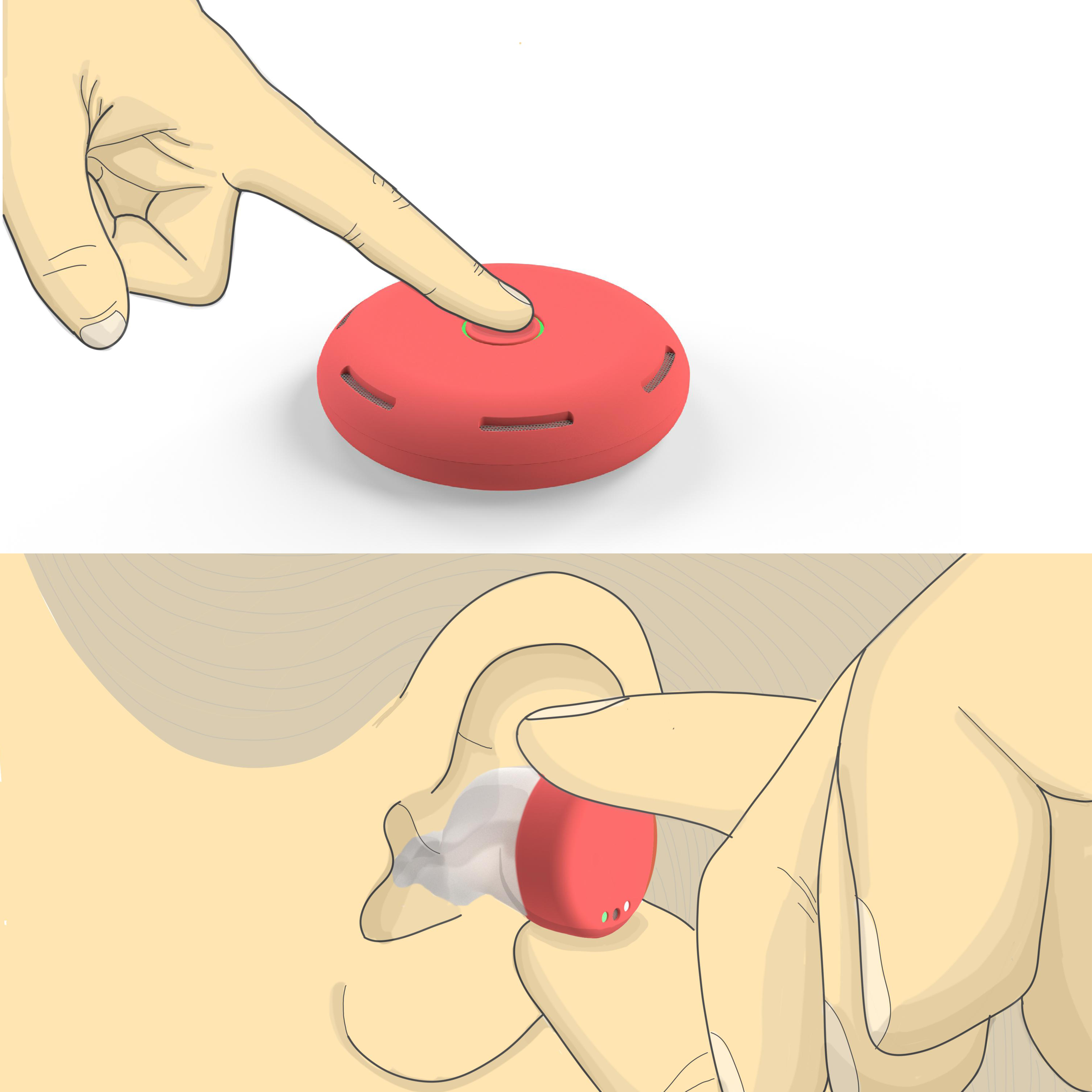

Amplify - Product Interactions
The adaptive directional microphone included within the package enables the user to have more control over listening to conversations in noisy, indoor social situations. The user is able to determine the direction they wish to hear more sound from by using touchpoint interactions on the top of the device. By tapping the centre touchpoint they can activate microphones in all directions or by individually tapping above each of the microphones they can manually select the directions they would like to hear from. They can also mute the microphones by double-tapping the centre touchpoint or manually muting each one by double-tapping above each of the microphones. For the user to interact with the hearing aid, they simply need to remove it from the case to initiate the power on function. Once within the ear, the user can choose whether to use the hearing aid in its default setting to allow them to use the hearing aids as usual or to use it within an isolated speaker mode setting. To use the isolated speaker mode, the user simply has to tap the hearing aid once on the outward-facing face and the mode will activate. If they wish to turn off this mode and return it to the default hearing aid level, they can double-tap the outward face which will deactivate isolated speaker mode.
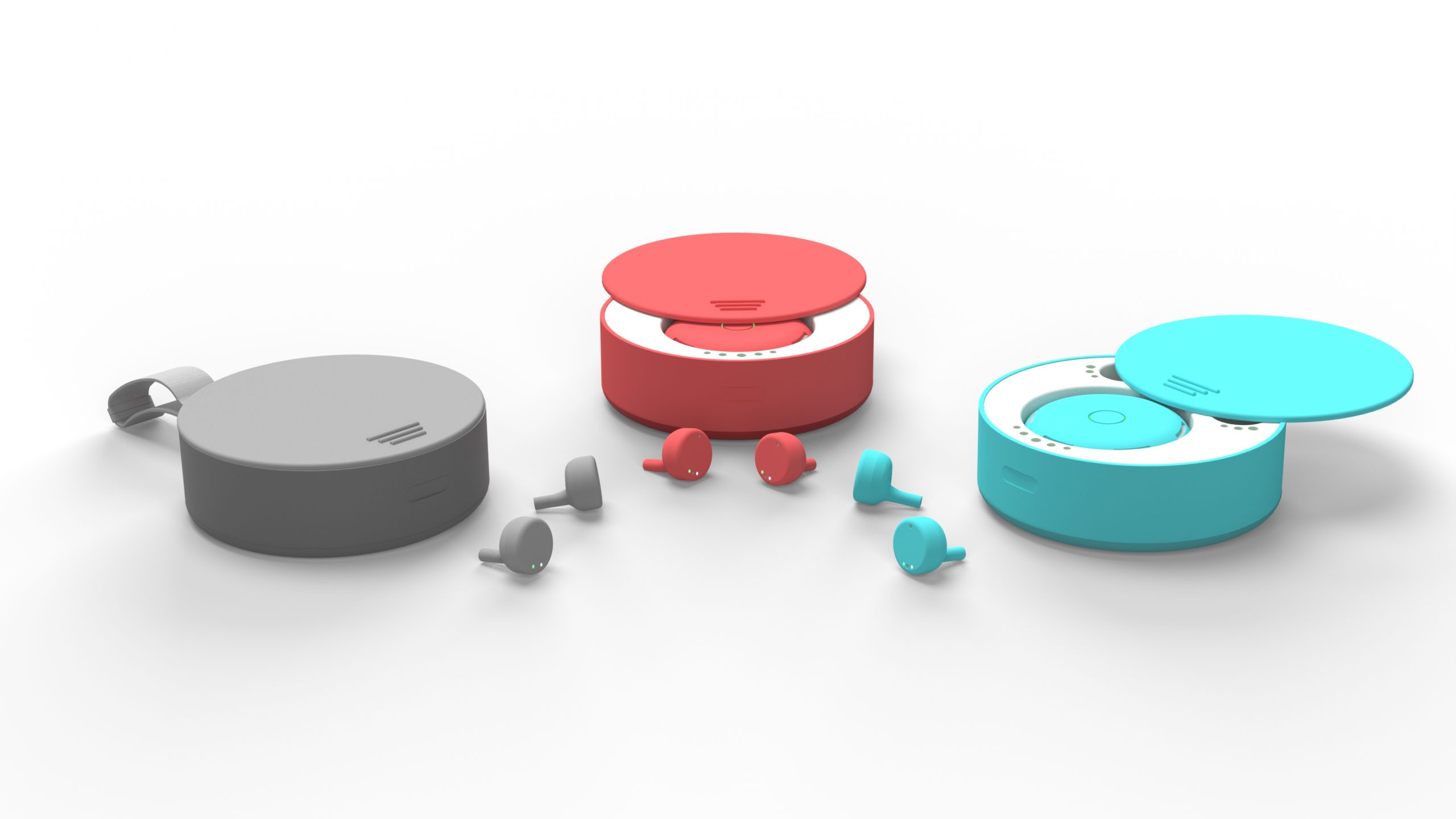

Amplify - Product Family
Due to the social stigma often found around the use of hearing assistive devices and evidence gathered through primary research, it was important that the product be available in various colours to allow users to customise it to their own style and taste. There would be an initial 3 colours offered to users and as the scale of production increases, more colours would be able to be offered to them.
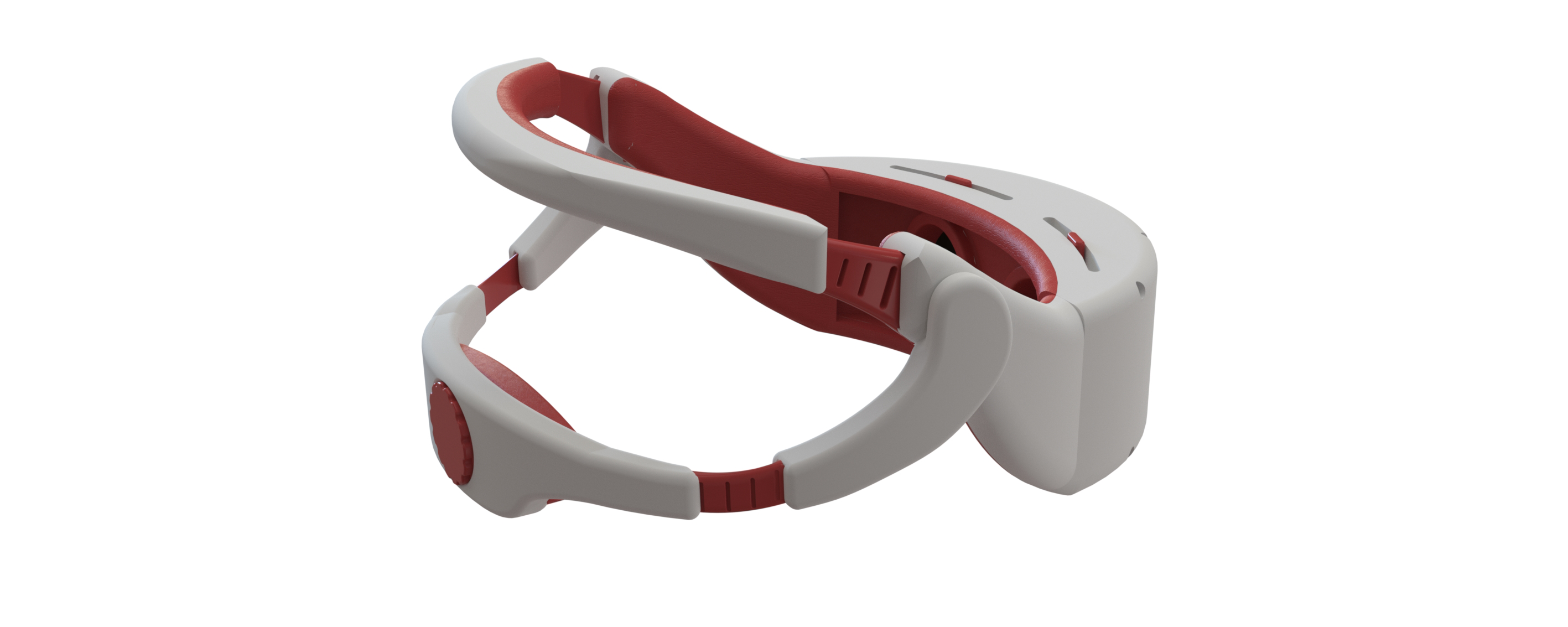

roam - Creating a More Inclusive VR Experience.
Submitted as entry to a live project brief set by the industry, roam is designed to address the gender bias within the VR industry through a more inclusive headset and controller design. Through the use of adjustable head straps and IPD lens positioning, users can cater the roam headset to their own measurements and eliminate motion sickness often experienced during VR by those who identify as female. roam also eliminates the need for a controller by using emerging ultrahaptic technology to project in-game sensations directly onto the players skin.


roam - Creating a More Inclusive VR Experience.
To create an inclusive design, adjustment features were developed to include a dial mechanism to adjust the bottom strap and a latch slider to push/pull the top strap wider or smaller for head fit. These cater to head breadths of 135mm-170mm. Individual IPD sliders were used on the front of the headset for independent adjustment of lens distance, as not all users have symmetrical faces or pupil distance. The range of the IPD sliders is 50mm to 70mm to fit both the smallest and largest users’ pupil distance.
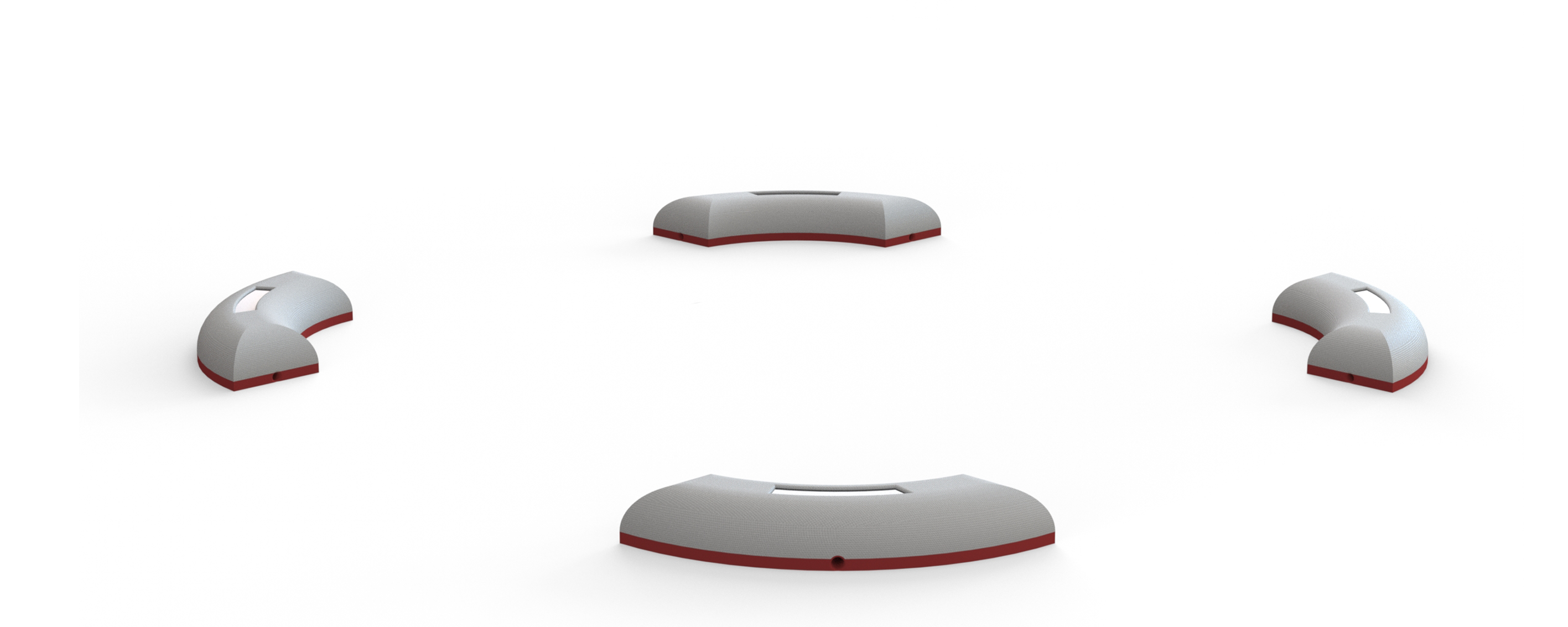

roam - Creating a More Inclusive VR Experience.
roam also eliminates the need for a controller by using emerging ultrahaptic technology to create in-game sensations directly onto the players' skin. Using leap motion cameras on both the headset and environment markers, roam can track and map hands virtually, allowing for controller-free movement. By re-arranging the environment marker array, users can play in any size space they have available, making it appropriate for any sized home.
Maddie Bowman
As an industrial designer, I focus on putting users and innovative design at the core of my design ethos. I always want to ensure that the designs I produce push the boundaries of innovation and challenge those accepted in order to improve peoples lives.
Over the duration of my time at Loughborough, I have undertaken a breadth of projects ranging from UX and app-based to product engineering. My favourite work that I have undertaken has been my final year design project which looks to tackle the stigma of the use of hearing aids and how those who are affected by hearing loss can be better included in social situations through the modernisation of hearing assistive devices. I have also really enjoyed working on a group project this year to create a solution that challenges gender equality within the U.K. through the development of a UX/product solution to balance the mental load. During my degree, I have discovered that my strengths lie in user-centred and user experience design, as I always strive to create with empathy for users needs and put them at the heart of the design. As well as this I have a passion for concept sketching and storyboarding and really enjoy using digital sketching to create. These passions have led me to develop skills in rapid ideation, concept development and user experience design.
Final year project
Amplify
Awards
'20 Diploma of Professional Studies.
Work Experience
Concept Design Intern at LEGO
August 2019 - Apri 2020
During my placement year, I worked at LEGO. As part of my time there I was able to work on a range of projects including the newly released Vidiyo and Super Mario. I also worked on LEGO City helping to develop new concepts for set designs. My role involved working on and facilitating concept generation and storyboarding experiences to develop new, innovative ideas for LEGO. Another element of my role was prototyping and model building to explain concepts during playtests and demonstrate the functions of ideas.
One of the skills that I learnt during my time there was effective team-working as the department often worked closely in small teams and I was able to work on multiple different projects so I could adjust to suit each teams working dynamic. I also developed my communication skills through presenting my ideas to collegues with sketch prototyping and giving presentations within the team.